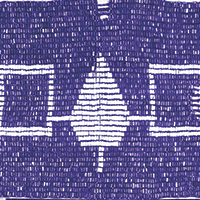
Ten Commandments
c. 1300 bc: Mount Sinai
Creation: After guiding the Israelites out of Egypt, Moses receives a pair of stone tablets inscribed with moral, social, and ritual laws direct from Yahweh.
Preservation: Angry with his people, Moses smashes the original tablets, though he has the laws reinscribed on stone slabs and placed in the Ark of the Covenant. Legends surrounding the fate of the Ark have proliferated since antiquity.

Twelve Tables
449 bc: Rome
Creation: Following a series of conflicts between the patrician and plebeian classes, the Roman Senate establishes a committee charged with drafting a set of procedural rights that apply to all citizens.
Preservation: Bronze tablets containing the laws are erected in the Forum for all citizens to read but vanish before Cicero’s time, perhaps destroyed by Gauls during the 387 bc sack of Rome.

Edicts of Ashoka
c. 260 bc: Mauryan Empire
Creation: After converting to Buddhism, the emperor Ashoka composes a series of moral guidelines promoting peace and safeguarding animals and vulnerable humans against violence.
Preservation: More than thirty of Ashoka’s precepts survive, inscribed on pillars, rocks, and caves across South Asia. Reflecting the diversity of the region, many are written in Aramaic and Greek.

Seventeen Article Constitution
604: Japan
Creation: Looking to Confucian and Buddhist sources, Prince Shotoku emphasizes harmony and meritocracy above all else in compiling the first articulation of imperial Japanese political philosophy.
Preservation: The oldest-known copy is part of a late ninth-century manuscript once owned by industrialist Iwasaki Hisaya, who from 1932 to 1950 donated his collection of 38,000 rare texts to the Toyo Bunko library.

Constitution of Medina
c. 622: Medina
Creation: After the Hijrah, Muhammad and his followers draw up a series of agreements with the residents of Medina, establishing freedom of religion for pagan and Jewish clans.
Preservation: The fate of the original document dictated by Muhammad is unknown. The version considered most authoritative is that preserved in Ibn Ishaq’s Life of Muhammad, which was written in the eighth century and survives in several medieval copies.

Hiawatha Belt
c. 1451: Onondaga
Creation: Woven from nearly seven thousand purple and white shell beads, the Hiawatha Belt records the creation of the Iroquois Confederacy. It is named for, and traditionally said to have been woven by, the Onondaga chief who convinced the Five Nations to unite.
Preservation: Along with eleven other wampum belts of historical importance, the Hiawatha Belt is returned to the Onondaga Nation in 1989 by the New York State Museum, which had purchased it nearly a century earlier, to much controversy.

Magna Carta
1215: Runnymede
Creation: Drafted by the archbishop of Canterbury in an unsuccessful attempt to prevent English barons from revolting against King John, the Magna Carta limits royal authority over the economic and legal rights of the nobility.
Preservation: To formalize the charter, the crown sends official copies to county sheriffs and bishops. Four of these survive, two at the British Library and one each at Lincoln and Salisbury Cathedrals.

Universal Declaration of Human Rights
1948: Paris
Creation: Former First Lady Eleanor Roosevelt chairs the eighteen-member committee that drafts the declaration, which had been proposed at the first session of the United Nations General Assembly in 1946.
Preservation: Following its adoption, more than 300,000 leaflets and 68,000 posters reproducing the declaration are distributed in the United States alone. Today translations into more than five hundred languages are available on the UN’s website.